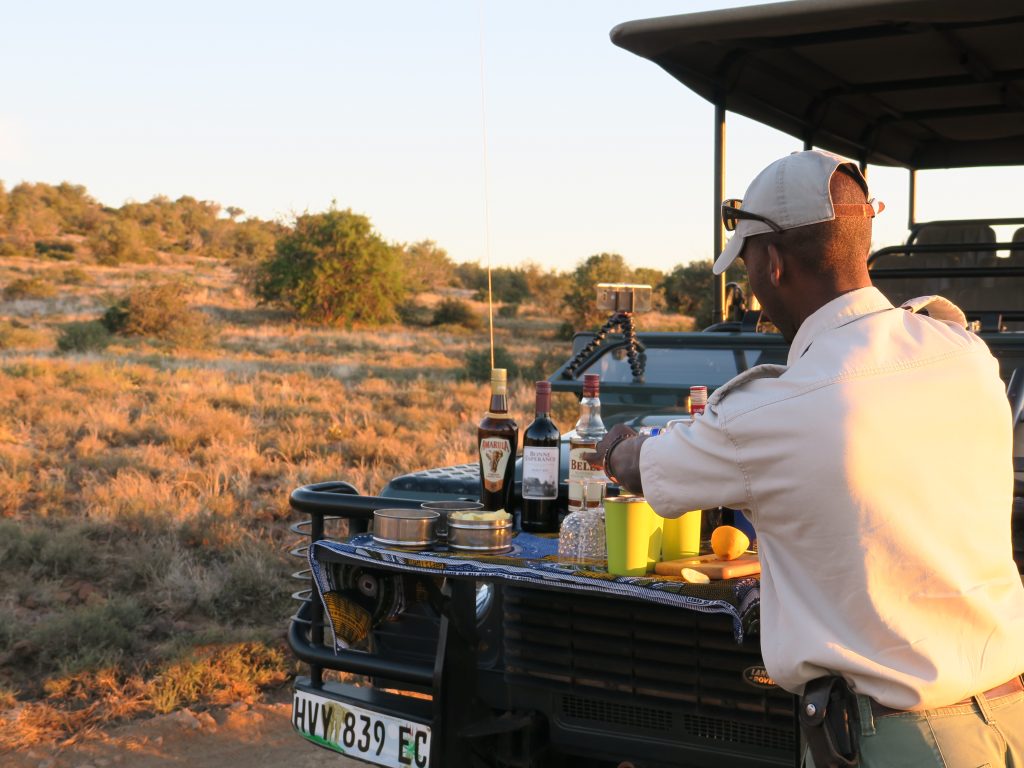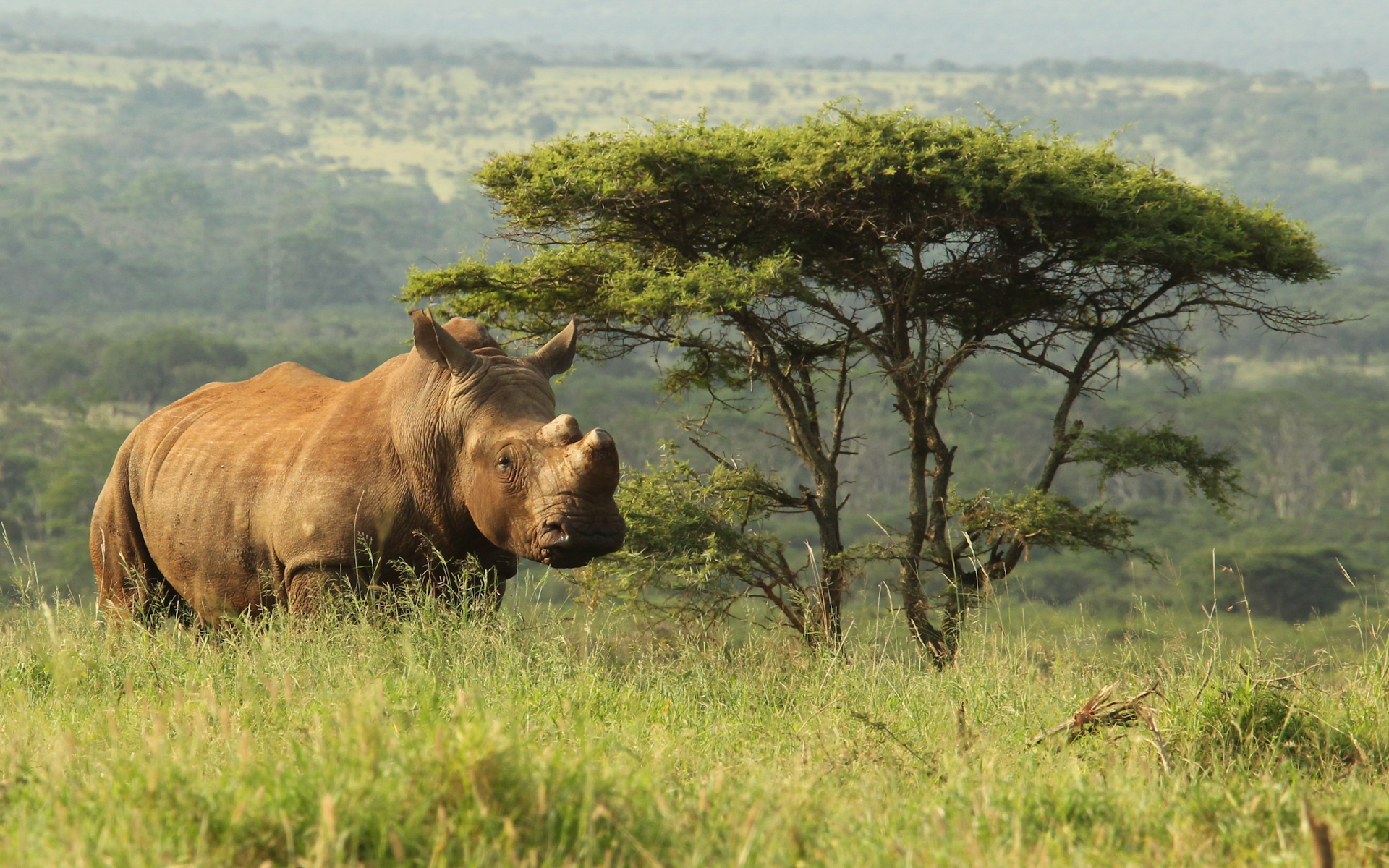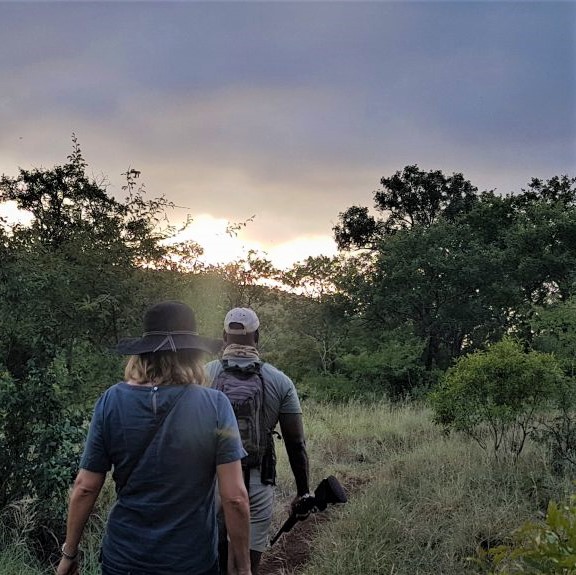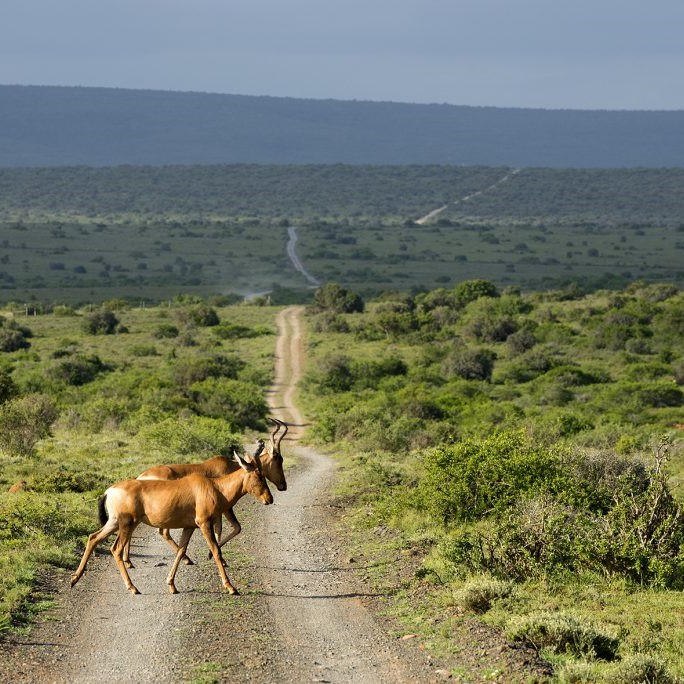There’s something about spending time in the African bush… the sights, the sounds and the smells that get under your skin and into your heart ensuring that you want – no, need – to return, time and time again. And it’s no different with Samara Game Reserve either. Once will never be enough, especially once you’ve experienced the wide expanses of the Karoo skies, the fabulous smiles of the lodge staff, heard all the wonderful conservation stories and marveled at the wonderful wildlife.
 Drive down a dusty dirt road within the semi-arid landscape of the Great Karoo, to a spot where you feel ensconced within the arms of dolorite capped mountains of the Sneeuberg Range and there, you’ll find Samara Game Reserve – a conservation success story on many levels. From the purchase and rehabilitation of eleven degraded livestock farms and the regeneration and re-establishment of vegetation, to the restoration of the herbivore community (including white rhino and buffalo) and finally the re-introduction of cheetah (2003), elephant (2017) and then lion (early 2019) – completing the Big Five round-up.
Drive down a dusty dirt road within the semi-arid landscape of the Great Karoo, to a spot where you feel ensconced within the arms of dolorite capped mountains of the Sneeuberg Range and there, you’ll find Samara Game Reserve – a conservation success story on many levels. From the purchase and rehabilitation of eleven degraded livestock farms and the regeneration and re-establishment of vegetation, to the restoration of the herbivore community (including white rhino and buffalo) and finally the re-introduction of cheetah (2003), elephant (2017) and then lion (early 2019) – completing the Big Five round-up.
 As important the Big Five are to many safari visitors to Africa, seeing them does not necessarily a safari make. It’s often the weird and wonderful critters that are most memorable, the wildlife stories told, and the knowledge gained over a G&T or around the crackling of a fire. Our time at Samara was no different, from early morning game drives and sunset G&T’s to a picnic lunch on the plateau and any time in between, Julius our amazing guide kept us enthralled.
As important the Big Five are to many safari visitors to Africa, seeing them does not necessarily a safari make. It’s often the weird and wonderful critters that are most memorable, the wildlife stories told, and the knowledge gained over a G&T or around the crackling of a fire. Our time at Samara was no different, from early morning game drives and sunset G&T’s to a picnic lunch on the plateau and any time in between, Julius our amazing guide kept us enthralled.
An early morning game drive had Julius out with his telemetry. He tells us that guests had seen Chilli the cheetah and her cubs somewhere in the area on their drive the previous evening, and if we’re lucky maybe we will too. Adjusting the settings as we drive the peep, peep, peep gradually gets louder. We hop off the vehicle quietly, receive safety instructions and set off up the hill through the Karoo bush.
 With his hand up, Julius warns that Chilli is up ahead. We round a clump of bushes quietly and are soon in awe of the little family lazing beneath a tree about 10 metres away – any closer and it we’re into her comfort zone. We sit enthralled as she preens the little bundles of fur, one of them gives us a very fierce look before rolling over and falling asleep. Julius tells us that the colouring and excessive fluffiness of the cubs resembles that of a honey badger, renowned for being a rather unsavoury catch for other predators. ‘How amazing is nature’, I think to myself.
With his hand up, Julius warns that Chilli is up ahead. We round a clump of bushes quietly and are soon in awe of the little family lazing beneath a tree about 10 metres away – any closer and it we’re into her comfort zone. We sit enthralled as she preens the little bundles of fur, one of them gives us a very fierce look before rolling over and falling asleep. Julius tells us that the colouring and excessive fluffiness of the cubs resembles that of a honey badger, renowned for being a rather unsavoury catch for other predators. ‘How amazing is nature’, I think to myself.
 Later we take a tortuous drive up the side of the mountain – aloes cling to the rocky slopes and Spekboom (Portulacaria afra) provide splashes of green. We learn that the Spekboom is one of nature’s miracle plants and that a one-hectare thicket of Spekboom is ten times more effective at removing carbon dioxide from the atmosphere than a hectare of Amazon rainforest! And here we were clinging to our seats as we snake our way through natures miracle. Little did we know another awaited us as we reached the top.
Later we take a tortuous drive up the side of the mountain – aloes cling to the rocky slopes and Spekboom (Portulacaria afra) provide splashes of green. We learn that the Spekboom is one of nature’s miracle plants and that a one-hectare thicket of Spekboom is ten times more effective at removing carbon dioxide from the atmosphere than a hectare of Amazon rainforest! And here we were clinging to our seats as we snake our way through natures miracle. Little did we know another awaited us as we reached the top.
 ‘Welcome to Samara’s Mara’ Julius announced as we crested the mountain. The extensive grasslands were totally unexpected, the quantity of game too – from Cape mountain zebra and black wildebeest, to gemsbok and red hartebeest, all grazing happily on the highly palatable ‘red grass’. A herd of eland choose to move off into the distance, not trusting our presence. ‘Look out for the secretary bird’ we are told, ‘they love the open grasslands of the ‘Mara’. We didn’t see one but did learn that they’re voracious predators with incredible snake-killing skills. And it’s not just the snakes they predate on, insects, small mammals and birds need to keep a watchful eye out for them too.
‘Welcome to Samara’s Mara’ Julius announced as we crested the mountain. The extensive grasslands were totally unexpected, the quantity of game too – from Cape mountain zebra and black wildebeest, to gemsbok and red hartebeest, all grazing happily on the highly palatable ‘red grass’. A herd of eland choose to move off into the distance, not trusting our presence. ‘Look out for the secretary bird’ we are told, ‘they love the open grasslands of the ‘Mara’. We didn’t see one but did learn that they’re voracious predators with incredible snake-killing skills. And it’s not just the snakes they predate on, insects, small mammals and birds need to keep a watchful eye out for them too.

 After all this game viewing the ‘picnic on the plateau’ was most welcome. Water deftly poured over dusty hands and dried with a fluffy towel, chilled bubbly and a crisp white table cloth blowing in the breeze beneath a well-endowed umbrella. A table laden with local cuisine, from frikkadels (meat balls) and mini lamb pies, to lentil salad and the yummiest chocolate cake – all washed down with a G&T or chilled Sauvignon Blanc. Mountain tops and marvelous views… could it get any better than this?
After all this game viewing the ‘picnic on the plateau’ was most welcome. Water deftly poured over dusty hands and dried with a fluffy towel, chilled bubbly and a crisp white table cloth blowing in the breeze beneath a well-endowed umbrella. A table laden with local cuisine, from frikkadels (meat balls) and mini lamb pies, to lentil salad and the yummiest chocolate cake – all washed down with a G&T or chilled Sauvignon Blanc. Mountain tops and marvelous views… could it get any better than this?
 On our drive back down the mountain we learnt how to tell the difference between a Cape mountain zebra and the more common Burchell’s zebra. Julius explained that one of the main differences was that the mountain zebra does not have stripes running under their belly whereas the Burchell’s zebra’s stripes extend onto its underparts. Pity we didn’t get close enough to check, I think – will just have to return for a closer look!!
On our drive back down the mountain we learnt how to tell the difference between a Cape mountain zebra and the more common Burchell’s zebra. Julius explained that one of the main differences was that the mountain zebra does not have stripes running under their belly whereas the Burchell’s zebra’s stripes extend onto its underparts. Pity we didn’t get close enough to check, I think – will just have to return for a closer look!!
The highlight of an evening game drive just must be the epic Karoo sunsets, when golden light floods over the low-lying scrub of the Nama Karoo vegetation. When giraffes seem to glow against the backdrop of green, completely unaware that we had stopped for sundowners nearby. Julius pours a G&T with the skill one would expect – just another notch in his ‘five-star safari lodge’ belt.


One last game drive the next morning has us seeing a flock of critically endangered blue crane, South Africa’s national bird, a bird that is shown much respect in the African culture. We learn about Samara’s decision to de-horn their rhino and that the Shepherd’s tree (Boscia albitrunca) is often called the Tree of Life for the sustenance that it offers to both humans and animals. Julius goes on to tell us that the root can be pounded and made into a porridge, beer – and to treat hemorrhoids! That the leaves are nutritious to browsers and that an infusion of the leaves is used to treat eye infections in cattle.
 So much to see, so much to learn. So much to absorb and to retain. Just not enough time… never enough time, that’s the way it is on safari at Samara. And that’s why return visits need to be planned, the sooner the better.
So much to see, so much to learn. So much to absorb and to retain. Just not enough time… never enough time, that’s the way it is on safari at Samara. And that’s why return visits need to be planned, the sooner the better.
As we drive away from the vast landscapes of the Karoo, I think to myself, ‘I didn’t even have time to lie beneath the stars and watch them dance beside the milky way’. Oh well, there’s always next time!!



































